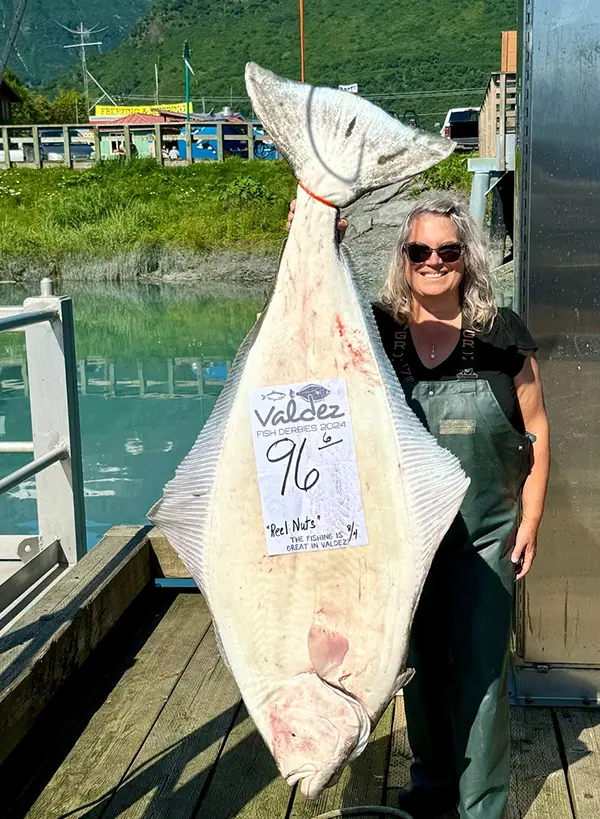
Thale Steenhoven caught this big halibut on her custom Raider she and her husband dock in Valdez each summer for their personal use.
How big do these Halibut get?
Alaska halibut is the largest of all flatfish and one of the most preferred white fish to catch and eat. The average halibut weighs 15 to 50 pounds but we like halibut in the 25 to 40-pound range for best eating. Many over 150 pounds are caught annually and some barn doors can top 300 pounds. These flatfish can be found in waters as shallow as 50 feet or as deep as 500 feet. Fishing for halibut occurs primarily between 100 and 300 feet but can sometimes be found in as little as 40 feet of water. Halibut are caught from February 1 through December 31, with peak fishing from late May until early August.
Tips for Halibut Fishing in Valdez
Whether you are going out with an experienced charter or out on your own, here are some tips for finding and catching what you came for. Study charts and be aware of the bottom; find good structures before dropping your line. Halibut do not like strong currents and will tend to occupy space near a drop off, mooring, or pinnacle. If you only have a short time to catch halibut, or you don’t fish there on your own often go with a charter. They are already dialed in to what is happening and the ocean is a vast fishery to find the fish in a short timeframe. It can definitely be worth the added expense if adding fish to your freezer is one of your main goals.
Halibut Fishing Gear
These big flat fish require a solid rod and reel. Use a stout rod and reel with at least 300 yards of 80-pound line when you are halibut fishing in Valdez.

Jeff Steenhoven with a superb flatfish.
Good bait is crucial. Squid or octopus, herring, cod, salmon heads and bellies are all used to lure the catch. It stands to reason that the bigger the bait, the bigger the halibut, but even the biggest halibut will eat whatever is available. It is important to check and/or change your bait every 15-30 minutes, or if you feel a nibble without a take. Jig your bait off the bottom to increase scent dispersion and create a chum slick by throwing extra bait around the boat. This will entice the fish to come closer. Stay in one spot long enough for the fish to come to you. When bait does not seem to be working or is difficult to get, try jigging with artificial lures and scent strips. Use rubber tails or metal lures made to represent herring or needlefish. Color is not as significant as proper movement, but white seems to be a popular choice because it can be seen in the low light levels.
Fill out our online travel planning questionnaire if you wish for us to put you in touch with Valdez fishing charters and area lodging we recommend. Let us know you are specifically interested in Valdez in the section of the form that says to tell us what we need to know about your desired fishing trip.
Check local regulations prior to fishing for accurate and up to date information.


